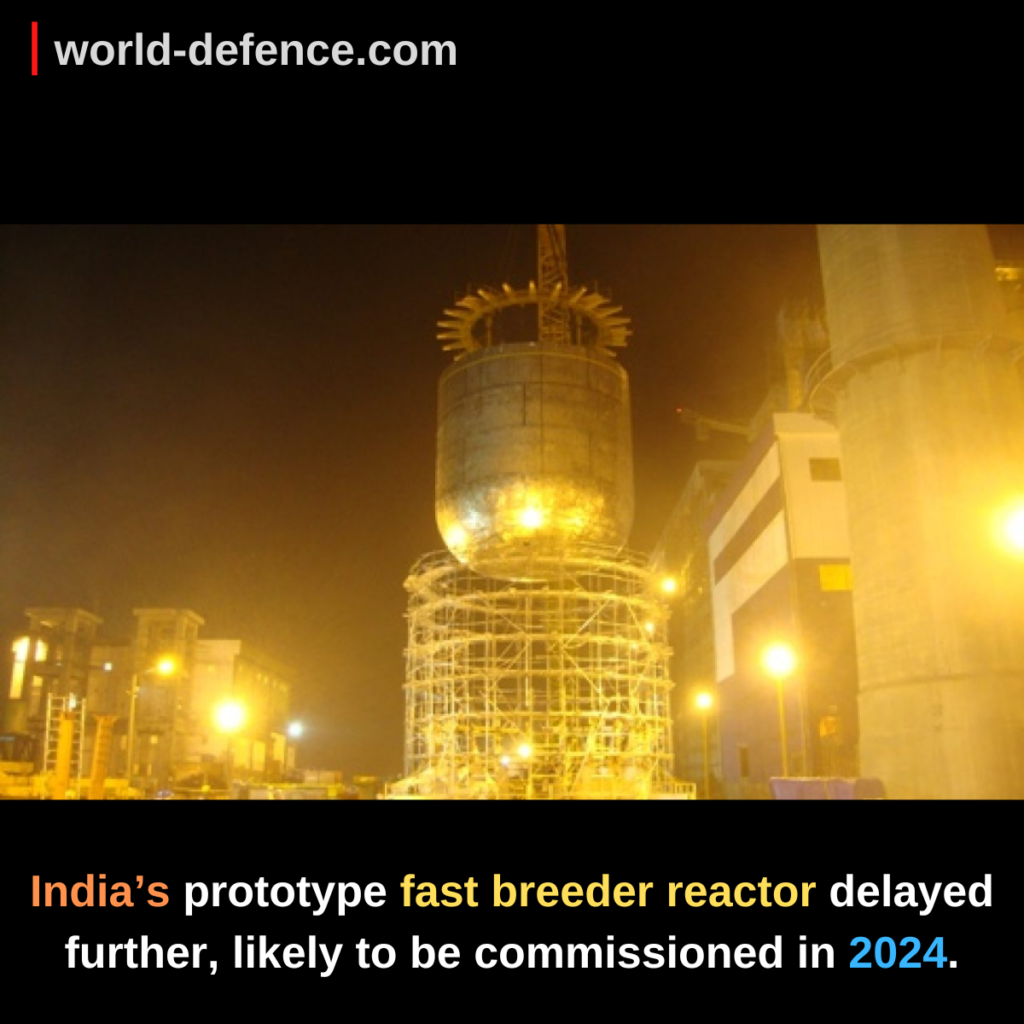The commissioning of India’s first prototype fast breeder reactor (PFBR), being set up at the nuclear power complex located in Kalpakkam in Tamil Nadu state, has been further delayed, according to the country’s Atomic Energy Minister Jitendra Singh.
Responding to a question last week in the Upper House of Parliament, Singh said that the indigenously built PFBR, named Bhavini, which will add 500 MW of electrical power to the national grid, is now expected to be commissioned in 2024.
In his written reply submitted to the Lower House of Parliament in September 2020, the Minister had said that technical issues had resulted in a prolonged delay in commissioning of the PFBR.
READ MORE: Maheshvarastra-1 Multi Barrel Guided Rocket will replace Russian SMERCH in Indian Army: Solar Group
“In the last three years, while commissioning activities of the various systems, structures and equipment of the PFBR are progressing, a large number of technical challenges as well as design inadequacies (owing to the first-of-a-kind status of the PFBR) are being encountered at each stage, thereby resulting in delay in commissioning.
These issues are being attended in close coordination with the designers and the experts within the Department of Atomic Energy (DAE),” Singh had said.
Bhavini’s mandate is to construct and operate subsequent prototype fast breeder reactors to help realise the second stage of India’s three-stage nuclear programme.
READ MORE: India seeks a submarine that does not exist, but one can be developed jointly: Rubin Design Bureau
As part of pre-project activities for the next two fast reactors, their design is being thoroughly reviewed considering all the commissioning feedback of the PFBR.
“Detailed design and analysis of the fast breeder reactors 1 and 2 are under progress incorporating all the stipulations in line with the latest AERB (Atomic Energy Regulatory Board) codes,” the annual report said.
“Based on the requirements of the major components to be fabricated and assembled at site, design of the site assembly shop (SAS) has been finalised and the same is under construction.
Presently, the finishing works such as transoms and mullions, masonry etc., are completed and plastering, fixing of doors etc., are in progress,” it added.
READ MORE: Indian Army seeks Two variants of Logistic Drones
The prototype fast breeder reactor PFBR is a key element of India’s nuclear power programme that was conceived in the late 1960s as a closed fuel cycle to be achieved in three stages.
The spent fuel generated from one stage would be reprocessed and used in the next stage of the cycle to produce power. A fast breeder reactor breeds more material for a nuclear fission reaction than it consumes.
The closed fuel cycle was designed to “breed” fuel and to minimize generation of nuclear waste. This three-stage nuclear power production program in India had been conceived with the ultimate objective of utilising the country’s vast reserves of thorium-232. India has the world’s third largest reserves of thorium.
READ MORE: Navy is proposing a Marine engine upgrade for INS Vishal
Note:- Technical Delays are justifiable in such a complex project. There are only few fast breeder thorium reactors in the world. India’s PFBR is one of the most advanced thorium reactor in the world.

